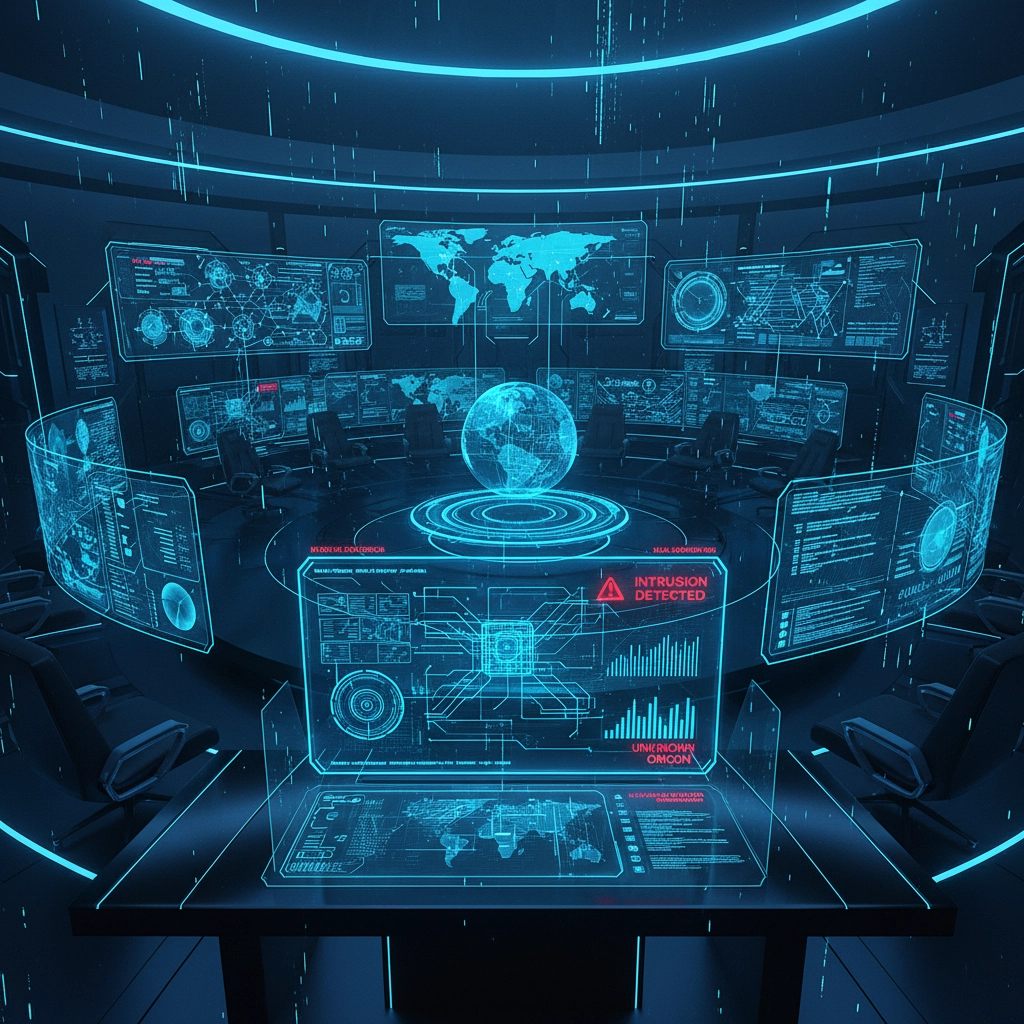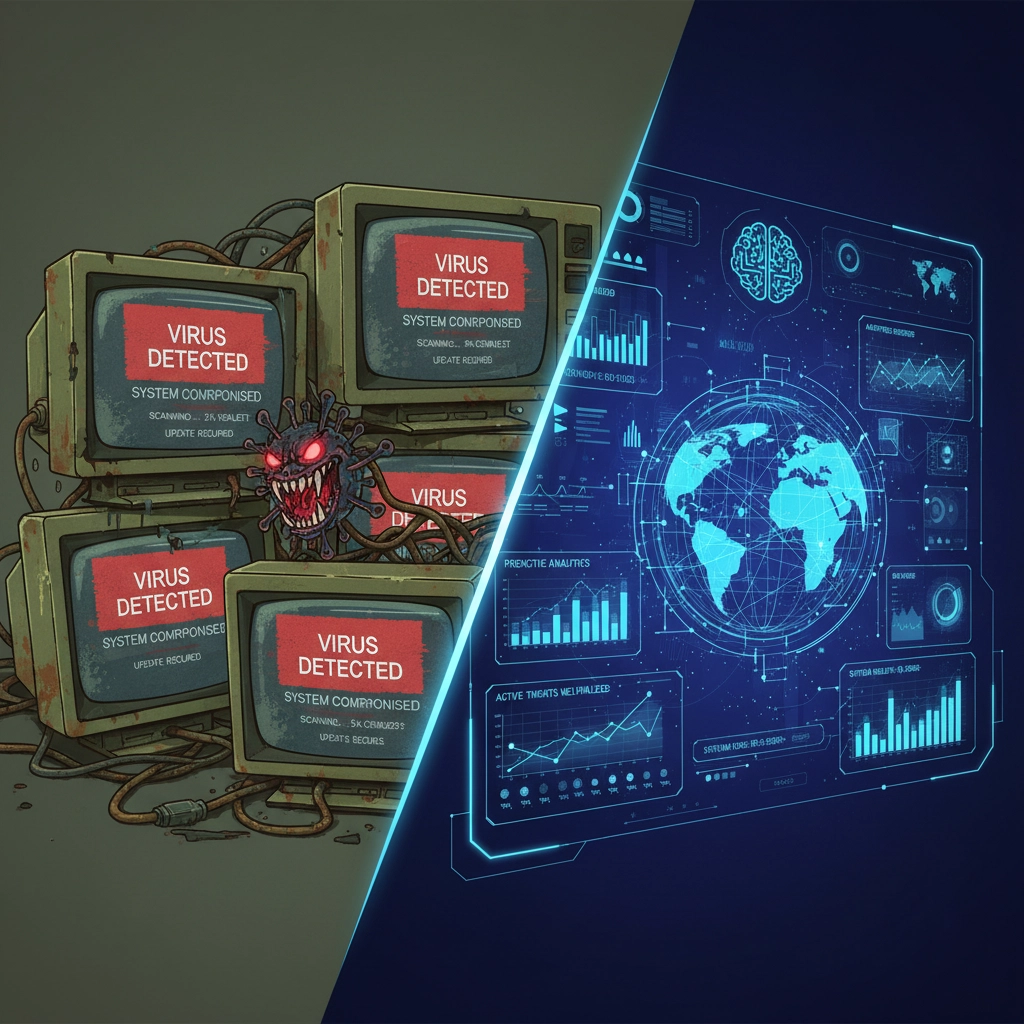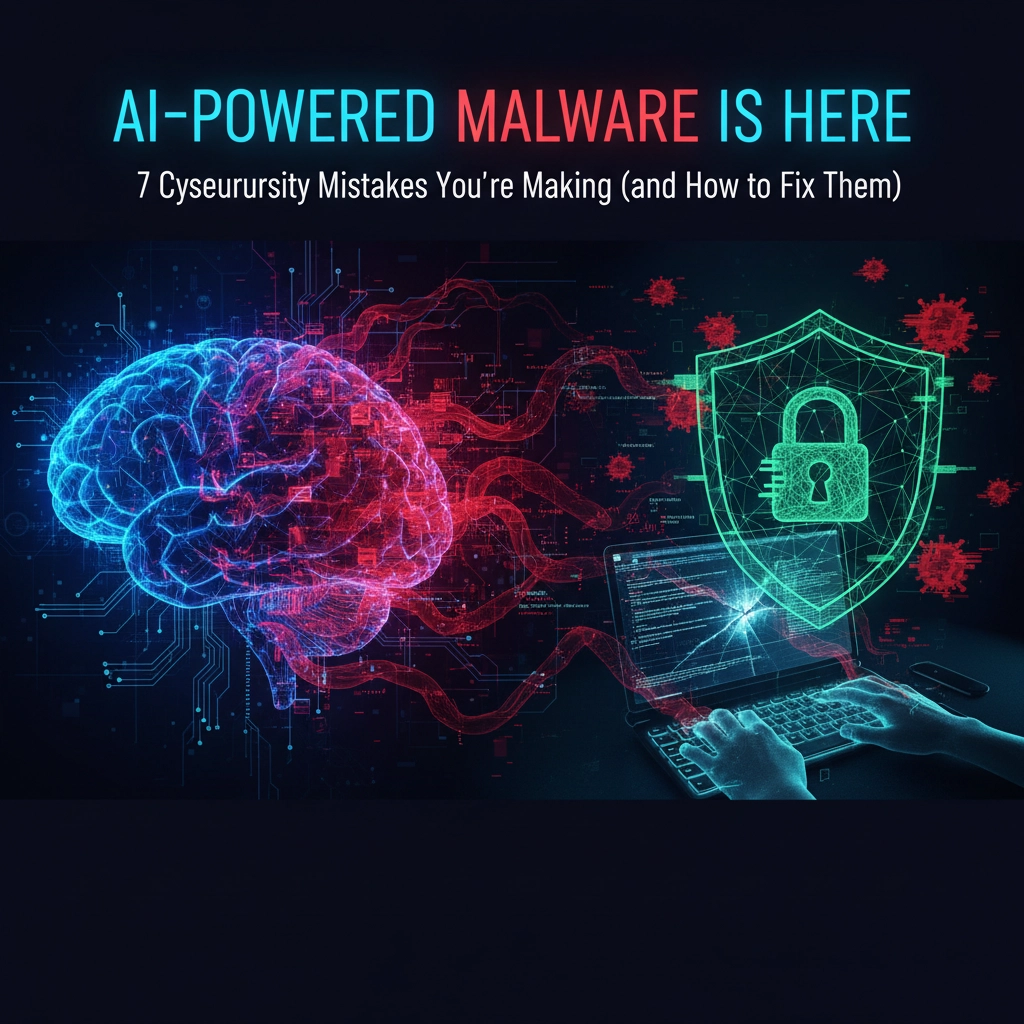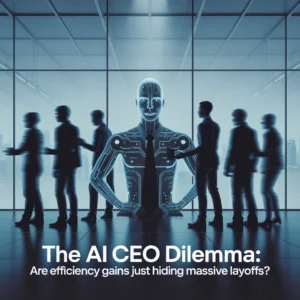Remember when computer viruses were just annoying pop-ups that slowed down your PC? Those days are long gone. Today's cybercriminals aren't coding malware by hand anymore: they're using artificial intelligence to create threats that adapt, learn, and evolve faster than traditional security can keep up.
Here's the scary part: AI-powered malware can modify its own code in real-time to avoid detection. It's like facing an opponent who changes the rules of the game while you're still playing. And thanks to cybercrime-as-a-service platforms, you don't need to be a coding genius to launch these attacks anymore.
The rise of tools like Nytheon AI and WormGPT has made sophisticated malware creation accessible to pretty much anyone with an internet connection. But here's what most people don't realize: they're making critical security mistakes that leave them wide open to these AI-powered attacks.
Mistake #1: Trusting Your Old-School Antivirus to Catch Everything
Your signature-based antivirus software was great in 2015. In 2025? It's like bringing a knife to a gunfight. Traditional antivirus systems work by recognizing known malware signatures, basically, they have a database of "bad stuff" to look out for.
But AI-powered malware doesn't play by those rules. Polymorphic malware automatically rewrites its own code every few minutes, creating new signatures that your antivirus has never seen before. It's like a shapeshifter that changes its appearance every time you look at it.
The Fix: Upgrade to behavior-based security systems that use AI to detect suspicious activity patterns. These systems don't just look for known bad guys: they watch for suspicious behavior, like a program suddenly trying to encrypt all your files or making unusual network connections.

Mistake #2: Falling for AI-Generated Phishing That Sounds Too Human
Last month, a colleague of mine received an email that perfectly matched her boss's writing style, referenced a project she was actually working on, and asked her to wire money to a "vendor." The email felt so authentic that she almost clicked send on a $50,000 transfer.
The catch? It was completely AI-generated.
Modern phishing attacks use natural language processing to craft messages that sound uncannily human. They analyze your social media posts, your company's website, even your LinkedIn activity to create hyper-personalized messages that hit all the right psychological triggers.
The Fix: Implement a "trust but verify" policy for any financial requests or sensitive information sharing. Create a separate communication channel (like a phone call or text) to confirm any unusual requests, even if they seem to come from someone you trust.
Mistake #3: Assuming You'll Spot a Deepfake When You See One
Here's a stat that should keep you up at night: 72% of businesses are confident their teams will recognize a deepfake of their leaders. Yet when the British engineering company Arup fell victim to a deepfake video call scam, their employee authorized fraudulent transactions because the fake executives looked and sounded completely real.
Deepfake technology has reached a point where it's nearly impossible to tell real from fake with the naked eye. And criminals are using this to bypass digital security entirely by targeting humans directly.
The Fix: Establish multi-channel verification protocols for high-value transactions or sensitive requests:
- Voice authentication systems for phone-based requests
- Video calls from multiple angles for important decisions
- Code words or security questions that only real team members would know
- Required approval from multiple people for significant financial transactions
Mistake #4: Ignoring the Power of AI-Enhanced Threat Intelligence
Companies that consistently use AI and automation in their cybersecurity save an average of $2.2 million compared to those that don't. Yet most organizations are still relying on manual threat detection and response.
AI-powered threat intelligence can analyze millions of data points in seconds, identifying attack patterns and emerging threats that would take human analysts weeks to spot. It's like having a security team that never sleeps and can process information at superhuman speed.
The Fix: Deploy AI-powered threat intelligence platforms that integrate with your existing security infrastructure. These systems should provide real-time threat assessment and automated response capabilities, allowing you to respond to threats before they become full-blown incidents.

Mistake #5: Thinking You Need to Reinvent Cybersecurity from Scratch
Here's some good news: AI hasn't fundamentally changed the cybersecurity battleground. It's just helped attackers streamline existing attack methods. Malware written by AI still behaves like malware, and ransomware created by AI doesn't have significantly more impact than human-created versions.
This means your fundamental security practices are still your first line of defense. The organizations getting hit hardest by AI-powered attacks aren't the ones with outdated AI defenses: they're the ones with poor basic security hygiene.
The Fix: Focus on strengthening these fundamental security practices:
- Patch management programs: Fix software bugs before malicious actors find them
- Multi-factor authentication: Add extra layers to prevent account hijacking
- Regular security training: Keep your team updated on current threat tactics
- Data backup and recovery plans: Ensure you can recover from ransomware attacks
- Network segmentation: Limit how far attackers can spread if they get in
Mistake #6: Underestimating AI-Powered Reconnaissance
Before launching an attack, criminals spend time researching their targets. With AI, this reconnaissance phase has become incredibly sophisticated. Criminal groups use AI-driven data mining to scan vast amounts of publicly available data, identifying vulnerable systems, valuable targets, and potential entry points.
They're analyzing your company's social media posts, employee LinkedIn profiles, job listings, and even your website's source code to build detailed attack plans. It's like having a private investigator who can process information at the speed of light.
The Fix: Conduct regular digital footprint assessments to understand what information you're exposing publicly. Implement data minimization strategies and review what information employees share on social media and professional platforms.

Mistake #7: Fighting AI Attacks with Human-Speed Responses
Threat actors are automating and scaling their attacks faster than ever before. AI enables them to launch thousands of targeted phishing emails per hour, scan millions of systems for vulnerabilities simultaneously, and adapt their attack methods in real-time based on your defenses.
Meanwhile, most organizations are still relying on human security teams to manually investigate threats, analyze incidents, and coordinate responses. It's like trying to stop a machine gun with a single-shot rifle.
The Fix: Adopt automated security orchestration and response platforms that can match the speed and scale of AI-powered attacks. Implement continuous monitoring systems and establish incident response teams equipped with AI-powered tools to respond to threats in real-time.
The Reality Check
My friend Sarah, who runs IT for a mid-sized marketing agency, learned this lesson the hard way. Her company had decent security: firewalls, antivirus, regular backups. But when they got hit by an AI-powered ransomware attack that spread through their network in under 10 minutes, their manual response procedures weren't fast enough.
The attackers had used AI to identify exactly which systems to target for maximum impact, and their malware adapted to bypass each security measure as the IT team tried to implement it. What should have been a containable incident turned into a company-wide shutdown.
The good news? After implementing AI-powered defense systems and automated response procedures, they haven't had a successful attack since. The key was understanding that fighting AI-powered threats requires AI-powered defenses.
Building a comprehensive defense strategy means combining advanced technology with enhanced human awareness and robust procedural safeguards. It's not about replacing everything you're doing: it's about upgrading your approach to match the sophistication of modern threats.
The cybercriminals are already using AI to attack you. The question is: are you using AI to defend yourself? What steps is your organization taking to upgrade its defenses against these evolving threats?







